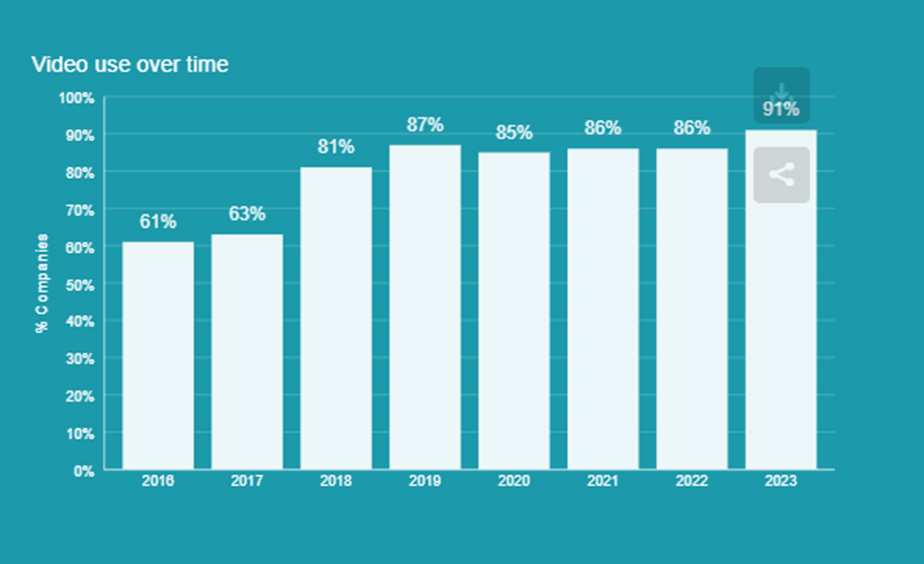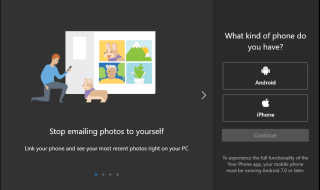In today’s digital landscape, search engines play a pivotal role in directing organic traffic to websites. Therefore, mastering the art of creating SEO-friendly content is non-negotiable. Ideally, you should aim to rank on the first page of search engines because 75% of internet users never scroll past that.
When it comes to writing SEO-friendly content, it’s important to keep in mind that it’s not just about filling your articles with a bunch of keywords. It’s about creating engaging and relevant content that appeals to end users and helps them solve their problems.
That’s where this guide comes into place. It’ll explain the best practices that you can use to optimize your posts and rank higher on search engines.
Contents
- What is SEO-Friendly Content?
- Why is SEO-Friendly Content Important?
- Best Practices for Optimizing Your Content Posts
- Final Words
What is SEO-Friendly Content?
Definition for Google Snippet: SEO content refers to a written piece that’s specifically crafted to attract search engine traffic. SEO means search engine optimization, and it’s a process of optimizing (updating) your website/content page so that internet users can easily find it through search engines like Google and Bing.
Explanation:
It’s important to note that attracting search engine traffic shouldn’t be your only goal. While it’s a good thing, it’s just one piece of the puzzle. Your ultimate goal should be to create content that not only ranks well in search results but also provides genuine value to the people who visit your website.
It means offering information, solutions, entertainment, or whatever your website’s purpose is, in a way that connects with your audience. When you focus solely on pleasing search engines, you might end up with content that looks good to algorithms but doesn’t provide any value to the readers.
In this case, you’ll undoubtedly attract traffic, but they’ll leave quickly (without converting). It’s one of the most common SEO mistakes that can affect your website negatively. So, focus on creating content that both people and search engines like.
Why is SEO-Friendly Content Important?
According to recent statistics, 68% of all online experiences start through a search engine. Here’s a list of the most important reasons why you should focus on writing SEO-friendly content.
More Online Visibility
When your content is optimized for SEO, it’s structured in a way that makes it easier for search engines to understand what it’s about. It’ll increase your content’s ranking on search engines and more people will come across your website when they search for relevant topics or keywords.
Outperforming Competitors
SEO-friendly content includes thorough research and analysis of what keywords and topics are relevant to your audience. By targeting these keywords and creating high-quality content around them, you’ll give your content a competitive edge.
As a result, your content will have a better chance to rank higher than the content of your competitors, which might not be as optimized.
Better Customer Experience
SEO-friendly content is designed to match the intent of users’ searches. When your content aligns with what users are looking for, they’re more likely to click on it and spend time on your website. To ensure this happens effectively, copywriting is essential. Effective copywriting entails creating compelling and interesting content that appeals to search engines as well as your target audience and resonates with them. In this, copywriting techniques can help you optimize your content to increase conversions and improve user experience.
It’ll decrease the bounce rate and signal to search engines that your content is relevant and valuable. Consequently, your content gains authority and ranks better.
Increased Revenue
SEO optimization isn’t just about ranking high; it’s about driving conversions. By creating content that addresses different stages of the buyer’s journey, you attract visitors who are genuinely interested in what you offer.
When these visitors find valuable information on your site, they’re more likely to convert into leads or customers. It can lead to increased sales and revenue for your business.
Important Note: Make sure that you focus on the Google search engine because 92.96% of international online traffic comes from Google Maps, Google Search, and Google Images.
Best Practices for Optimizing Your Content Posts
Now that you understand what SEO is for content and why it’s important let’s discuss the best practices that you can follow to optimize your content posts.
Determine Your Target Audience
Identifying your target audience means figuring out the specific group of people who are most interested in what you write. It’s critically important because when you know who you’re talking to, you can create content that resonates with them.
Here’s how you can do it:
- Know Your People: Think about the type of readers you want to attract. Are they parents, students, tech lovers, travelers, fitness enthusiasts, etc.? Having this information will help you talk to them in a way that clicks.
- Understand their Wants and Needs: It’s important to consider what your readers want. Are they looking for tips, entertainment, solutions to problems, or inspiration? Once you know, you can provide exactly what they’re searching for.
- Speak Their Language: While writing content, you need to make sure that you use words your target audience wants to read and can relate to.
Gathering this information will allow you to write content that’ll make your ideal readers think, “This is exactly what I’ve been looking for”.
Research and Use the Right Keywords
Keywords are the words/phrases that people type into search engines to find answers/solutions to their questions/queries. That’s why using the right keywords in your content is important.
Not only will it help you improve your website’s visibility on search engines but it’ll also attract the right audience to your website.
Important Tips for Searching and Using Keywords
- Start the keyword research by brainstorming the words that you think are related to your content. These are your initial guesses about what people might search for.
- You can use keyword research tools, such as Google Keyword Planner, to gather data on keyword popularity and search volume. These tools can help you identify keywords that people are actively searching for.
- Consider using long-tail keywords, which are longer and more specific phrases. They can be highly effective in targeting a specific audience.
- High-competition keywords are usually harder to rank for, so it’s often beneficial to balance with a mix of low and medium-competition keywords, especially if you’re just starting out with SEO content.
- Make sure that you choose keywords for a specific post that reflects the content discussed in it. It means that the keywords you choose must align with what your content offers to searchers.
- Incorporate keywords naturally into your content, including title, headings, subheadings, and body text. Avoid overusing them because they’ll appear forced and affect readability.
- Include your target keyword in the URL of your page or post whenever possible. It’ll provide search engines with a clear idea of your content’s focus.
- Create a concise and engaging meta description that includes your keyword as it appears in search results and influences click-through rates.
- Optimize images added to a post by including your keyword in image titles and alt text to allow search engines to comprehend the content of your images.
- Use internal links to connect relevant pages on your website. Use descriptive anchor text that includes keywords to enhance user experience and the site’s structure.
Understand Search Intent
When you’ve identified keywords that you want to focus on, the next step is to grasp what people actually want when they type those keywords. This is called “search intent”, and understating it is important to make sure that your content meets the expectations of your website visitors.
Google breaks down search intent into four main categories:
- Know Queries: This is when people want information or answers. They’re looking to learn something specific.
- Do Queries: Here, people are after instructions or guidance, which means they want to know how to do something step by step.
- Website Queries: In this case, searchers are on the hunt for a particular website or resource.
- Visit in-Person Queries: These searchers want to find a physical place to go to – like a store, restaurant, or office.
Before you start writing, it’s important to determine which of these categories your chosen keyword fits into. After that, you need to validate your understanding by checking out what kind of content is already ranking for that keyword.
You can look at your competition to find out if they’re addressing the same type of search intent you’ve identified. Additionally, you can also look for the ways they’ve used to set up their content to fulfill what searchers want.
Once you’ve confirmed the search intent, structure your content in a similar but improved manner. You want to ensure that your content directly addresses what people are looking for.
For example:
- If it’s “know” intent, offer clear information and answers.
- For “website” intent, showcase the resource.
- If it’s “do” intent, provide detailed instructions.
- for “visit in person” intent, indicate the location(s) clearly.
Create a Structure for Your Post
You want to write a content piece that’s easy to read and search engine friendly as well, and it requires a clear and organized structure. Generally, each of your posts should have the following three parts.
- Introduction: This is where you introduce the topic you’re going to talk about. The main purpose of this part is to grab your reader’s attention and give them a sneak peek into what’s coming.
- Body: The body is where you dive deep into your topic, laying out your main points, providing examples, and offering valuable insights. Make sure that you use headings, subheadings, bullets, and lists to format your content properly. It’ll make the entire piece easy to navigate and increase its readability.
- Conclusion: This part wraps things up by summarizing the key points you made in the body. You can also give your readers something to think about or suggest what they can do next based on what they just learned. You can also use CTAs (Call-to-Actions) in this part to redirect your visitors to a service/product page if needed.
Having a clear structure makes your content posts easy to follow. Not only does it improve user experience but it can also help with ranking. That’s because search engines appreciate well-structured content pieces, as it’s easier to understand their intent.
Utilize the Power of Visual Content
According to statistics, our brain processes visual content around 60,000 times faster than written content. That’s why 95% of consumers prefer short videos to make purchase decisions, and 91% of digital marketers use promotional videos for online marketing.

All these stats explain the importance of using visual content, which means you must add infographics, relevant images, and short videos to your content.
Here are some tips to use visual content.
- Choose visuals that directly relate to your content. Ideally, it should explain what you’re talking about.
- Use descriptive alt tags and captions for images because it’ll inform search engines what the image is about.
- Compress your images to ensure your page loads quickly. You don’t want slow-loading pages on your website as they can turn readers away and increase the bounce rate.
- Use appropriate file formats like JPEG for photos, PNG for graphics, and videos that are easily viewable across devices.
Pay Attention to Inbound and Outbound Links
Links are like paths that connect your content to the vast world of the internet. They give both search engines and readers important cues about your content’s credibility and value.
Along with the internal links that we’ve discussed above, you should also pay attention to inbound and outbound links.
Inbound Links (Backlinks)
In simple words, these are links from other websites to yours. They’re like recommendations to tell search engines that your content is reliable and worth reading.
- Authority Matters: Backlinks are like endorsements and you need to aim to get links from websites that are respected authorities in your field.
Outbound Links
These are links from your content to other websites. They give readers a chance to explore more and show that you’re connecting them to useful information.
- Quality Matters: When you link to other websites from your content, make sure they’re trustworthy and reputable sources. Think of it like recommending a reliable friend – it adds credibility to your content.
Take Advantage of Google Featured Snippets
Google Featured Snippets contain quick answers to questions that pop up right at the top of search results. You want your content to be in these snippets because they’ll allow your website to rank at the top place of search results.
It’s important to note that Google Featured Snippets account for more than 35% of the total click share. So, you should strive to optimize your content to secure a spot in these snippets.
Here are some important tips that you can follow to achieve that.
- Check the Style: Look at how the current Featured Snippet is set up. Is it a paragraph, a list, or maybe a table? Understanding this helps you create content that matches the format.
- Question/Answer Format: Put the question that the snippet answers as a subheading in your blog post.
- Immediate Answer: Right after that subheading, give a super clear and concise answer to the question. It needs to be better than what’s already in the snippet, but should also match the structure as well.
- Optimize High-Ranking Content: Focus on content on your website that’s already doing well. That’s because most (99.58%) snippets come from pages that are already on the first page of search results.
- Add Facts and Figures: Using numbers and solid facts in your answers can make your content more likely to be featured.
- Cover Multiple Questions: If there are several questions related to your topic (the “People also ask” section), answer them in your content. You can also focus on longer-tail keywords in these questions, as they often trigger featured snippets.
Optimize Your Article’s Length
When it comes to article length, finding the sweet spot is the key. Google prefers longer content, but overly long articles might turn readers away.
Here’s what you should consider:
- Minimum Word Count: Your blog posts should have at least 300 words to provide enough substance for search engines to understand your content.
- Skillful Writing for Long Articles: If you’re confident in your writing skills, longer articles can work well. They allow you to dive deep into a topic. But if writing isn’t your strong suit, focus on making your content engaging and concise.
- Use Your Focus Keyword: As you write, make sure to include your focus keyword throughout the article. This helps with SEO (Search Engine Optimization) and signals to Google what your content is about.
The following are some general word-count guidelines for different content types.
- Press releases: 400-700 words
- Announcement articles: 400-600 words
- News articles: 600-1,000 words
- Use cases or demos: 500-1,500 words
- Informational blog posts: 1,000-1,500 words
- Guides and how-tos: 1,500-2,500 words
- Demo articles: 500-1,000 words
- Pillar pages: 3,000+ words
Important Note: Keep in mind that these are just general guidelines, not rules. So, you can change them if needed but make sure that you prefer quality over quantity.
Final Words
Regardless of the type of business you’re running, it’s important to craft online content for your brand. It allows you to communicate with your audience and share information about your products/services.
But to create a strong online presence and generate traffic to your website, you must pay attention to the SEO side of the content. We hope this guide has helped you understand how to make your content SEO-friendly to achieve your online goals.
Lastly, make sure that you stay up to date with the latest SEO trends to ensure your content remains effective and your online presence continues to grow.


